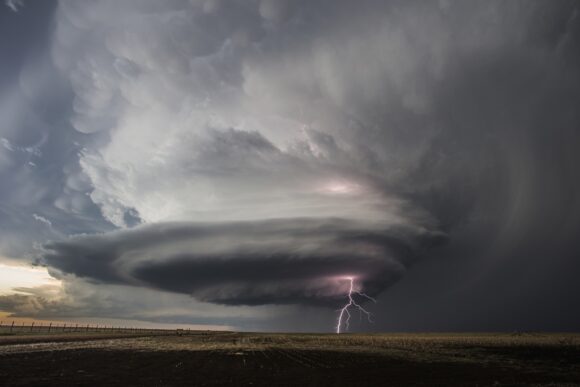After a costly 2023 severe convective storm season in the US, reinsurers underwriting in the regional property catastrophe market are skeptical about providing frequency cover, but their overall appetite remains healthy, according to Gallagher Re.
Carriers are less willing to provide aggregate covers for regional property-catastrophe risk, preferring instead to deploy capital through occurrence excess of loss (XOL) programs, said Gallagher Re in a blog titled US Regional Property Reinsurance Market Stabilizes After a Summer of Storms, which was authored by Josh Knapp, executive vice president – Broking – National, Gallagher Re.
The report is based on the findings of a market survey of 24 reinsurers which are active in the regional market – companies that focus on regional personal and small commercial business. Conducted in the fall of 2023, the survey asked questions related to pricing and portfolio appetite, capacity expectations and structure considerations for various reinsurance programs.
The survey found that the overall dollar amount of capacity to be deployed in property cat coverage for insureds was likely to remain flat during the upcoming January 2024 reinsurance renewals.
“The findings are significant, as half of respondents said that from 40% to 60% of their US book renews at 1.1. And for 59% of reinsurer respondents, regional clients made up at least 40% of their 1.1 renewals,” the report said, noting that 58% of reinsurers planned to write the same amount of property cat as last year through similar levels of participation in insurers’ cat programs, with 38% planning for modest growth.
Rising claims from severe convective storms in the US is focusing the minds of insurers and their reinsurers. During the first nine months of 2023, SCS insured losses topped US$50 billion for the first time on record, according to Aon.
As a result of these frequency exposures, reinsurers have a growing preference for excess layers. Indeed, Gallagher Re said the same survey in 2022 found that 37% of reinsurers were unwilling to write aggregate covers. This year, that percentage jumped to 63%, the Gallagher survey found.
This increase follows a challenging insurance renewal in January 2023, during which reinsurers made less capacity available for working layers and aggregate covers, amid fundamental shifts in pricing and increases to attachment levels, the broker continued.
“By contrast, there are now signs that reinsurers are beginning to lean into this market in a more meaningful but selective way. Reinsurers’ desire to shift capacity further up the programs to more remote layers will result in ample capacity at these levels, which could result in a reduction in pressure on rates,” Gallagher Re said.
The challenge for Jan. 1, 2024 is to balance this dynamic with reinsurers’ willingness to support programs across the board, the report said.
Such a balance could be achieved through more sophisticated program design, Gallagher Re said. For example, while two-thirds of the reinsurers confirmed they wouldn’t write aggregate policies, one-quarter of those carriers said they would consider providing subsequent-event XOL reinsurance coverage. “This number was a slight uptick in appetite compared to last year when just 17% of respondents said the same,” the broker continued.
Loss-Free Accounts
Gallagher Re said there are early signs of rate expectations being moderated for stronger performing portfolios, when compared to the prior year. “Reinsurers are expected to rely less on mandated, across-the-board rate increases this year, and focus more on the client-specific underwriting experience, with an emphasis on loss experience in 2023,” the broker said.
For loss-free property cat XOL exposures, 84% of respondents said they expected pricing to rise less than 20%, with 46% predicting increases of less than 10%, while a small number even reported they expected prices to drop by up to 5%, the report said, noting that this outlook for reinsurance buyers is better than last year, when a fifth of reinsurers looked for a more than 20% price lift, and no carriers expected a drop in rates.
Meanwhile, for portfolios that have been hit by losses, 68% of respondents expected price increases of 10%-30%.
The Gallagher Re survey found similar moderated rate expectations for per risk coverage: loss-free accounts were expected to generate rate increases of flat to 10% in 2024, according to 49% of respondents, which is an increase from just 27% of reinsurers the year before. On the other hand, last year’s survey found the majority of reinsurers pushed for 10-20% rate hikes for loss-free accounts.
“Reinsurers are expected to place significant weight on historical experience when evaluating retention levels and pricing, specifically when considering whether the retentions agreed at 1.1.23 proved adequate, or if further corrections are needed.”
Ceding companies should expect their reinsurers to push for retention increases in some cases, Gallagher Re said.
“The survey found that 78% of respondents indicated that greater than 10% of their portfolios will require retention increases, with 39% indicating that they will be pushing for retention increases on at least 20% of their portfolio. At a minimum, reinsurers will be looking to keep retentions on pace with exposure change and inflation.”
Photograph: This May 21, 2020, photo provided by Victor Gensini shows a tornado in Moscow, Kan. A new study says a warming climate will fuel more supercells or tornados in the United States and that those storms will move eastward from their current range. (Victor Gensini via AP)
Was this article valuable?
Here are more articles you may enjoy.


 Trump’s Trade War Forces Canada into Decision on Whether to Hit US Autos
Trump’s Trade War Forces Canada into Decision on Whether to Hit US Autos  France Fines Apple $162M Over iOS Data Tracking Consent
France Fines Apple $162M Over iOS Data Tracking Consent  Bankrupt 23andMe’s DNA Data Gets Sale Nod as Concerns Linger
Bankrupt 23andMe’s DNA Data Gets Sale Nod as Concerns Linger  Smoke Damage from LA Wildfires Leaves Questions to Be Answered
Smoke Damage from LA Wildfires Leaves Questions to Be Answered 